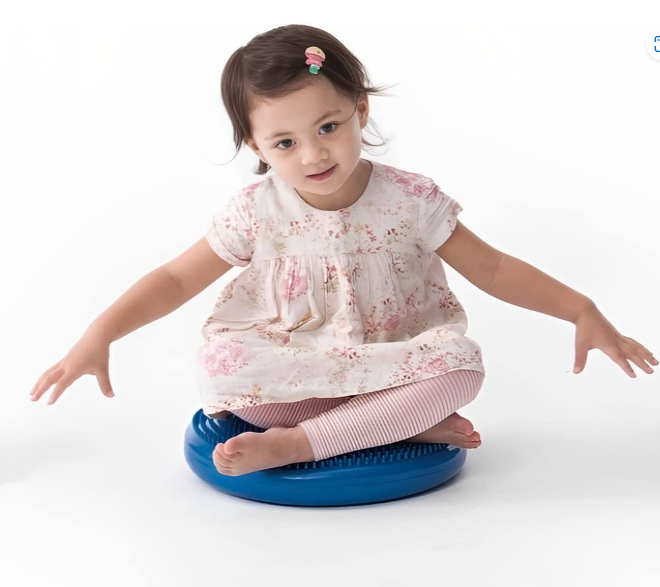Understanding Sensory Seeking Behaviour and the Benefits of Sensory Toys
Explore the concept of sensory seeking behaviour in children and its connection to sensory processing disorder (SPD) or autism spectrum disorder (ASD).
TeacherMum
4/11/20243 min read
Understanding Sensory Seeking Behaviour
Sensory seeking behaviour refers to a tendency in some individuals, particularly children, to actively seek out sensory stimulation in their environment. This behaviour is often observed in individuals with sensory processing disorder (SPD) or autism spectrum disorder (ASD), although it can also be present in individuals without any diagnosed conditions.
Children who engage in sensory seeking behaviour may exhibit a variety of actions such as spinning, jumping, rocking, or seeking out certain textures, sounds, or smells. They may have a constant need for movement and may appear restless or fidgety. Sensory seeking behaviour can be both a way for children to regulate their sensory input and a way to explore and engage with their surroundings.
The Benefits of Sensory Toys
Sensory toys are designed to provide specific types of sensory input to help individuals with sensory seeking behaviour regulate their sensory systems. These toys can offer a range of tactile, visual, auditory, or proprioceptive stimuli, depending on the specific needs of the child.
There are several ways in which sensory toys can benefit children who engage in sensory seeking behaviour:
1. Sensory Regulation:
Sensory toys can help children regulate their sensory input by providing them with the stimulation they seek. For example, a textured ball can provide tactile input, while a vibrating toy can offer proprioceptive input. By engaging with these toys, children can fulfil their sensory needs in a controlled and safe manner.
2. Focus and Attention:
Engaging with sensory toys can also help children improve their focus and attention. The sensory input provided by these toys can help redirect their attention from distractions and increase their ability to concentrate on specific tasks or activities. This can be particularly beneficial in educational or therapeutic settings.
3. Emotional Regulation:
Sensory seeking behaviour is often associated with difficulties in emotional regulation. Sensory toys can serve as a calming and soothing tool for children, helping them manage their emotions and reduce anxiety or stress. For example, a weighted blanket or a stress ball can provide a comforting sensory experience and promote relaxation.
Product Review: Physioworx Bobbled Wobble Cushion
One sensory toy that can be particularly beneficial for children with sensory seeking behaviour is the Physioworx Bobbled Wobble Cushion. This cushion is designed to provide both tactile and proprioceptive input, making it an excellent tool for sensory regulation.
The bobbled surface of the cushion offers a textured tactile experience, which can be highly stimulating for children who seek out different textures. The cushion also provides proprioceptive input through its wobbling and balancing features. When sitting or standing on the cushion, children need to engage their core muscles to maintain balance, which can help them improve their body awareness and stability.
The Physioworx Bobbled Wobble Cushion is highly versatile and can be used in various settings. It can be placed on a chair to provide sensory input during seated activities or used on the floor for balance and coordination exercises. The cushion is made of durable and non-toxic material, ensuring its safety and longevity.
Parents and educators who have used the Physioworx Bobbled Wobble Cushion have reported positive outcomes. They have noticed improvements in their children's ability to focus, sit still, and regulate their sensory input. The cushion has also been effective in promoting better posture and core strength.
Overall, the Physioworx Bobbled Wobble Cushion is a valuable sensory toy for children who engage in sensory seeking behaviour. Its unique design and functionality make it an excellent tool for sensory regulation, focus, and emotional regulation.
Conclusion
Sensory seeking behaviour can have a significant impact on a child's daily life, affecting their ability to focus, regulate their emotions, and engage with their environment. Sensory toys, such as the Physioworx Bobbled Wobble Cushion, can play a crucial role in helping children with sensory seeking behaviour meet their sensory needs in a controlled and beneficial way.
By providing the right type of sensory input, these toys can support sensory regulation, improve focus and attention, and aid in emotional regulation. Investing in sensory toys can be a valuable step in supporting the development and well-being of children with sensory seeking behaviour.
Heads up: This post contains affiliate links. Clicking on them and making a purchase may earn me a small commission, at no extra cost to you. Rest assured, I only recommend products I believe in. Your trust is everything.
Thanks for your support!


